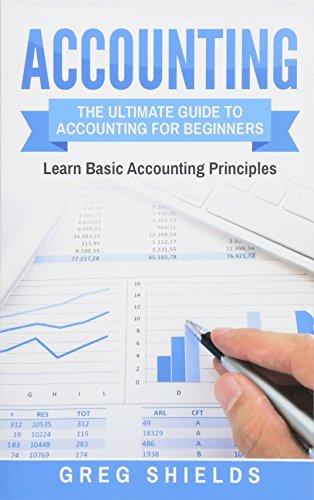


Financial statements for Fanning Company follow. FANNING COMPANY Balance Sheets As of December 31 Year 4 Year 3 $ 18,500 20,500 46,000 131,000 25,000 241,000 32,000 280,000 31,000 $584,000 $ 14,500 6,500 38,000 139,000 10,000 208,000 25,000 265,000 26,000 $524,000 Assets Current assets Cash Marketable securities Accounts receivable (net) Inventories Prepaid items Total current assets Investments Plant (net) Land Total assets Liabilities and Stockholders' Equity Liabilities Current liabilities Notes payable Accounts payable Salaries payable Total current liabilities Noncurrent liabilities Bonds payable Other Total noncurrent liabilities Total liabilities Stockholders' equity Preferred stock, (par value $10, 5% cumulative, non-participating; 8,000 shares authorized and issued) Common stock (no par; 50,000 shares authorized; 10,000 shares issued) Retained earnings Total stockholders' equity Total liabilities and stockholders' equity $ 19,200 78,800 26,000 124,000 $ 8,100 65,000 20,000 93,100 150,000 29,000 179,000 303,000 150,000 24,000 174,000 267,100 80,000 80,000 121,000 281,000 $584,000 80,000 80,000 96,900 256, 900 $524,000 CAMINITNIC COMDAMIV Year 3 $260,000 6,000 266,000 FANNING COMPANY Statements of Income and Retained Earnings For the Years Ended December 31 Year 4 Revenues Sales (net) $280,000 Other revenues 9,000 Total revenues 289,000 Expenses Cost of goods sold 140,000 Selling, general, and administrative 60,000 Interest expense 9,500 Income tax expense 48,000 Total expenses 257,500 Net earnings (net income) 31,500 Retained earnings, January 1 96,900 Less: Preferred stock dividends 4,000 Common stock dividends 3,400 Retained earnings, December 31 $121,000 118,000 55,000 8,700 47,000 228,700 37,300 67,000 4,000 3,400 $ 96,900 Required Calculate the following ratios for Year 4 and Year 3. a. Working capital. b. Current ratio. (Round your answers to 2 decimal aces.) c. Quick ratio. (Round your answers to 2 decimal places.) d. Receivables turnover (beginning receivables at January 1, Year 3, were $39,000). (Round your answers to 2 decimal places.) e. Average days to collect accounts receivable. (Use 365 days in a year. Round your intermediate calculations to 2 decimal places and your final answers to the nearest whole number.) f. Inventory turnover (beginning inventory at January 1, Year 3, was $145,000). (Round your answers to 2 decimal places.) g. Number of days to sell inventory. (Use 365 days in a year. Round your intermediate calculations to 2 decimal places and your final answers to the nearest whole number.) h. Debt-to-assets ratio. (Round your answers to the nearest whole percent.) i. Debt-to-equity ratio. (Round your answers to 2 decimal places.) j. Number of times interest was earned. (Round your answers to 2 decimal places.) k. Plant assets to long-term debt. (Round your answers to 2 decimal places.) I. Net margin. (Round your answers to 2 decimal places.) m. Turnover of assets (average total assets in Year 3 is $524,000). (Round your answers to 2 decimal places.) n. Return on investment (average total assets in Year 3 is $524,000). (Round your answers to 2 decimal places.) o. Return on equity (average stockholders' equity in Year 3 is $256,900). (Round your answers to 2 decimal places.) p. Earnings per share (total shares outstanding is unchanged). (Round your answers to 2 decimal places.) q. Book value per share of common stock. (Round your answers to 2 decimal places.) r. Price-earnings ratio (market price per share: Year 3, $12.00; Year 4, $13.00). (Round your intermediate calculations and final answer to 2 decimal places.) s. Dividend yield on common stock. (Round your answers to 2 decimal places.) Year 4 Year 3 a. b. C. d. times times e. days days f. times times g. days days % h. % i. Working capital Current ratio Quick ratio Receivables turnover (beginning receivables at January 1, Year 3, were $39,000) Average days to collect accounts receivable Inventory turnover (beginning inventory at January 1, Year 3, was $145,000) Number of days to sell inventory Debt-to-assets ratio Debt-to-equity ratio Number of times interest was earned Plant assets to long-term debt Net margin Turnover of assets (average total assets in Year 3 is $524,000) Return on investment (average total assets in Year 3 is $524,000) Return on equity (average stockholders' equity in Year 3 is $256,900) Earnings per share (total shares outstanding is unchanged) Book value per share of common stock Price-earnings ratio (market price per share: Year 3, $12; Year 4, $13.00) Dividend yield on common stock times j. k. times I. % % m. n. % % 0. % % p. per share per share per share 9. per share r. S. % %









